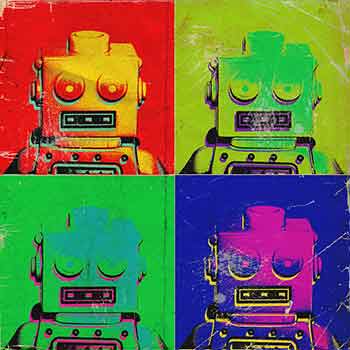- An Adaptive Learning Interface that Adjusts Task Difficulty based on Brain State (PDF) — using blood flow to measure cognitive load, this tool releases new lessons to you when you’re ready for them. The system measures blood flow using functional near-infrared spectroscopy (fNIRS). Increased activation in an area of the brain results in increased levels of oxyhemoglobin. These changes can be measured by emitting frequencies of near-infrared light around 3 cm deep into the brain tissue and measuring the light attenuation caused by levels of oxyhemoglobin. I think we all want a widget on our computer that says “your brain is full, go offline to recover,” if only to validate naptime.
- Deploying Software — Your deploys should be as boring, straightforward, and stress-free as possible. cf Maciej Ceglowski’s “if you find it interesting, it doesn’t belong in production.”
- Replicating SQLite Using Raft — rqlite is written in Go and uses Raft to achieve consensus across all the instances of the SQLite databases. rqlite ensures that every change made to the database is made to a quorum of SQLite files, or none at all.
- An Introduction to Autonomous Robots — An open textbook focusing on computational principles of autonomous robots. CC-NC-ND and for sale via Amazon.
"robotics" entries


Four short links: 2 March 2016
Sensing Cognitive Load, Boring is Good, Replicating SQLite, and Intro to Autonomous Robots

Rob Coneybeer on Nest and the next big thing in hardware
The O’Reilly Hardware Podcast: Virtual reality, robotics, and today’s hardware landscape.
Subscribe to the O’Reilly Hardware Podcast for insight and analysis about the Internet of Things and the worlds of hardware, software, and manufacturing: TuneIn, Stitcher, iTunes, SoundCloud, RSS.
In this new episode of the Hardware Podcast, David Cranor and I talk with Rob Coneybeer, managing director and co-founder of Shasta Ventures, one of the critical first investors in hardware startups including Nest, Fetch Robotics, and Turo (formerly RelayRides).
Discussion points:
- Why Nest looked like an appealing investment back in 2010
- Coneybeer’s focus on virtual reality and robotics as the next big things for hardware startups.
- Why it’s essential for hardware startups to have a long-term plan for improving products after they’re in place, and the importance of over-the-air software updates.
- The consumer psychology of selling a compelling hardware product, and when to aim for high price and high value. “People are willing to spend money when there’s something that’s really revolutionary,” says Coneybeer.
- The current state of venture capital investments in hardware startups. While raising later rounds is becoming more difficult, Coneybeer says: “the most interesting, innovative hardware companies will always find capital.”


Four short links: 9 February 2016
Collaborative Mario Agents, ElasticSearch at Scale, Anomaly Detection, Robotics Experiment
- Social Intelligence in Mario Bros (YouTube) — collaborative agents built by cognitive AI researchers … they have drives, communicate, learn from each other, and solve problems. Oh, and the agents are Mario, Luigi, Yoshi, and Toad within a Super Mario Brothers clone. No code or papers about it on the research group’s website yet, just a YouTube video and a press release on the university’s website, so appropriately adjust your priors for imminent world destruction at the hands of a rampaging super-AI. (via gizmag)
- How we Monitor and Run ElasticSearch at Scale (SignalFx) — sweet detail on metrics, dashboards, and alerting.
- Simple Anomaly Detection for Weekly Patterns — Rule-based heuristics do not scale and do not adapt easily, especially if we have thousands of alarms to set up. Some statistical approach is needed that is generic enough to handle many different metric behaviours.
- How to Design a Robotics Experiment (Robohub) — although there are many good experimental scientists in the robotic community, there has not been uniformly good experimental work and reporting within the community as a whole. This has advice such as “the five components of a well-designed experiment.”

Tobias Kinnebrew on robots as paint brushes
The O’Reilly Solid Podcast: How using robots for artistic purposes changes the way we perceive art.
Subscribe to the O’Reilly Solid Podcast for insight and analysis about the Internet of Things and the worlds of hardware, software, and manufacturing.
The short film Box caused a sensation in 2013 by effortlessly blending industrial robots and projection mapping — physical and digital. Bot & Dolly, the studio behind Box, specialized in robotic cinematography until it was bought by Google in 2013, becoming part of Google Robotics.
Sometimes overlooked amid the spectacular effects it developed in-house was the significance of Bot & Dolly’s software platform: it was an abstraction layer that worked as a plug-in for Autodesk’s Maya design software, putting otherwise arcane industrial robots in the hands of any production designer who could wield a mouse.
In this episode of the Solid Podcast, David Cranor and I talk with Tobias Kinnebrew, strategist at Google Robotics and formerly the director of product strategy at Bot & Dolly and principal creative director for HoloLens at Microsoft. Read more…


Four short links: 14 October 2015
Diversity Planning, Women in Robotics, AWS Resources, and Web Authentication
- Signals from Velocity New York — “If your company is creating a diversity plan and you’ve actually gone and counted people,” Liles said, “you’ve already lost.” If you’re motivated to count, then know you’ve already lost. You want to know by how much.
- 25 Women in Robotics You Need to Know About — The DARPA Robotics Challenge (DRC) Finals 2015 were similarly lacking; of the 444 robot builders representing 24 robot entrants, only 23 builders were women (though some of the most successful teams at the DRC had female team members). Given how multidisciplinary the field is, and how many different skills are required, we need to celebrate women who are achieving greatness in robotics until we are seeing more parity. Great list.
- Awesome AWS — A curated list of awesome Amazon Web Services (AWS) libraries, open source repos, guides, blogs, and other resources.
- The Web Authentication Arms Race — Cryptography can only be used to transfer existing trust or secrecy across time or space; if the attacker impersonates the defender before the user establishes anything, it becomes impossible for the user to tell which party is legitimate. This sentence, made in solid gold Yes.


Four short links: 29 September 2015
Indie VC, Robotics Acquisitions, Music Money, and USG Web Standards
- My xoxo Talk (Bryce Roberts) — about indie.vc and the experience of trying something good in the investment world. You won’t believe what happened next …
- 10 More Robotics Companies Acquired (Robohub) — companies of all types and sizes are finding strategic reasons to acquire robotic ventures to add to their arsenal of products and services because they don’t want to be left behind.
- The Past, Present, and Future of the Music Biz — you might not agree with the conclusions, but the numbers are horrifying^W edifying. The U.S. concert industry has nearly tripled since 1999 (when recorded music sales peaked). Yet, what’s typically overlooked by this narrative is that the vast majority of this growth – 83% to be exact – has gone to non-Top 100 touring artists. In 2000, the Top 100 tours (which included ‘NSYNC, Metallica and Snoop Dogg & Dr. Dre) collected nearly 90% of annual concert revenues. Today, that share has fallen to only 44%.
- U.S. Web Design Standards — U.S. Digital Service and 18F put together a reusable component library and style guide for U.S. Government apps.


Four short links: 15 September 2015
Bot Bucks, Hadoop Database, Futurism Biases, and Tactile Prosthetics
- Ashley Madison’s Fembot Con (Gizmodo) — As documents from company e-mails now reveal, 80% of first purchases on Ashley Madison were a result of a man trying to contact a bot, or reading a message from one.
- Terrapin — Pinterest’s low-latency NoSQL replacement for HBase. See engineering blog post.
- Why Futurism Has a Cultural Blindspot (Nautilus) — As the psychologist George Lowenstein and colleagues have argued, in a phenomenon they termed “projection bias,” people “tend to exaggerate the degree to which their future tastes will resemble their current tastes.”
- Mind-Controlled Prosthetic Arm (Quartz) — The robotic arm is connected by wires that link up to the wearer’s motor cortex — the part of the brain that controls muscle movement — and sensory cortex, which identifies tactile sensations when you touch things. The wires from the motor cortex allow the wearer to control the motion of the robot arm, and pressure sensors in the arm that connect back into the sensory cortex give the wearer the sensation that they are touching something.


Four short links: 4 September 2015
Next President, Robotic Drivers, Vintage Graphics, and Javascript Scheduling
- Lessig for President — it’s time.
- Is a Cambrian Explosion Coming for Robotics? (PDF) — interesting list of drivers, including wireless tech, battery efficiency, and worldwide data storage.
- How Oldschool Graphics Worked (YouTube) — video series on how ’80s computer graphics effects were built. (via BoingBoing)
- Tasks, Microtasks, Queues, and Schedules (Jake Archibald) — today’s dose of javascript scheduling headache.


Four short links: 24 July 2015
Artificial Compound Eye, Google Patent Licensing, Monitoring and Alerting, Computer-Aided Inference
- A New Artificial Compound Eye (Robohub) — three hexagonal photodetectors arranged in a triangular shape, underneath a single lens. These photodetectors work together and combine perceived changes in structured light (optic flow) to present a 3D image that shows what is moving in the scene, and in which direction the movement is happening.
- Google’s Defensive Patent Initiative (TechCrunch) — good article, despite TechCrunch origin. Two-tiered program: give away groups of patents to startups with $500k-$20M in revenue, and sell patents to startups.
- Bosun — an open-source, MIT licensed, monitoring and alerting system by Stack Exchange.
- The Rise of Computer-Aided Explanation (Michael Nielsen) — Hod Lipson of Columbia University. Lipson and his collaborators have developed algorithms that, when given a raw data set describing observations of a mechanical system, will actually work backward to infer the “laws of nature” underlying those data. (Paper)


Four short links: 16 July 2015
Consumer Exoskeleton, Bitcoin Trends, p2p Sockets, and Plain Government Comms
- ReWalk Robotics Exoskeleton — first exoskeleton for the paralyzed to receive regulatory approval; 66 bought so far, 11 with reimbursement from insurance. The software upgrades for the ReWalk 6.0 provide a smoother walking gait (with less of a soldier-like marching step), an easier stopping mechanism, and a much-improved mode for ascending and descending stairs. The user wears a wristwatch-like controller to switch the suit between sit, stand, walk, and stair modes. How long until a cheaper version hits the market, but you don’t always get to control where it takes you if there’s a sale on featuring brands you love? (via IEEE)
- Bitcoin Trends in First Half of 2015 — 94% increase in monthly transactions over the past year. 47% of Coinbase wallet holders are now from countries outside the U.S.
- Socket.io p2p — an easy and reliable way to set up a WebRTC connection between peers and communicate using the socket.io-protocol.
- 18F Content Guide — communications guide for government content writers that bears in mind the frustrations citizens have with gov-speak websites.

